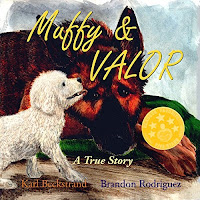Title:
The Lost City of the Monkey God: A True Story
Author: Douglas Preston
Link to the video version of this review is available here:
https://youtu.be/OP2t00ekKa0
I hope you are in the mood for some jungle exploration because
we are going to Honduras! There’s a legendary city in eastern Honduras called La Ciudad Blanca, or The White City. Many Hondurans and native peoples living in Honduras believed in the legend of Ciudad Blanca and a curse that went along with it, which is those who go there would get sick and die. Very
fascinating, tuck that away, because we’ll come back to that.

Douglas Preston is an author probably best known for his
fictional thriller novels, include the Tom Broadbent series and the Wyman Ford
series, private investigator series. Preston is also a journalist, and he was
working as a reporter for National Geographic and The New Yorker in 2013 when
he came along for a helicopter ride where LIDAR was used from the sky to gain
better imagining of remote, dense jungle in Honduras. There are a lot of archaeological sites in
Honduras, and they’re often studied by archaeologists who are led there by
native people groups who know about them. So this site was really different in
that it was found by LIDAR, it was not close to any human settlements. The
benefit of the LIDAR is that from the ground, the vegetation was so dense, you
wouldn’t be able to see any earthworkds, you wouldn’t even be able to see any
ruins unless you were basically on top of them. And the LIDAR scan found an
incredible amount of evidence that there were earthworks and even lots of stone
ruins in the area. The number of ruins
they found went far beyond any expectation.

So it takes about 2 years to work with the Honduran
government to get permits for the site.
And in 2015 Preston goes with a team of archaeologists who partnered
with the Honduran military to do an excavation. And I thought the book did a
great job of providing cultural context for how archaeological sites in
Honduras often struggle with looting, with the drug trade, with the
historically unstable government. And I
thought he did a great job of chronicling the team’s experience in this
incredible place where it’s believed humans had not set foot in centuries.
And I thought there was a good balance of providing
historical context of what the region would have been like before Spanish colonization.
There was a section that discussion just the historical context, but for the
most part, I thought the author did a great job weaving the history into the
story.
So, about the last half to the last third of the book, is
about what happens after the team leaves the site, leaves the Honduran jungle
and goes home.
First off, their
credibility is attacked by a handful of archaeologist who were closely aligned
with the previous government party that controlled Honduras. So the author complains about that for a
while. His frustration seemed justified, but I can’t say it was that
fascinating to read about. And then, the whole team is completely covered in
insect bites, and as the months pass about half the team notices a bug bite
that won’t go away, and is it fact getting larger, and redder and covered in a
wet film. They’re living in different countries, and they’re all pretty much
getting treated with antibiotics for it that do nothing. The bites don’t itch
or hurt so they don’t think it’s infected, but the doctors, all of whom live in
Europe and North America, don’t know what to do.

So, the guys from the trip do more research about tropical
diseases, and they decide they think they’ve contracted leishmaniosis, a
parasite that you get from sand-fly bites, and they resolve to see doctors who
specialize in tropical disease. And yes,
they all had contracted an ancient strain of leishmaniasis, it’s a terrible,
slow moving disease where your nose and cleft palatte and even your eyes can
disintegrate into a cavern of mucous.
I’m not going to put images up here, but if you google image mucous leishmaniosis,
you’ll get some horrifying images that will stay with you for a long time. There’s three different strains of leish, and
the mucous face one is the one that exists in the Americas. Yay. They had a
really hard time getting treated because so few doctors go into parasitology,
because there’s no money in it, the patients who contract diseases from
parasites are often quite poor. So the
last half of the book is really the author shining a spotlight on this terrible
parasite disease and the different strains that impact some of the poorest
people living in the world.
And the author then actually goes back to Honduras to visit
the same site, after his leish in in remission, and the book ends focused on
the native people of the area and the beauty of the Honduran jungle.
Here are the articles the author wrote for The New Yorker and National
Geographic to report on the archaeological sites:
























